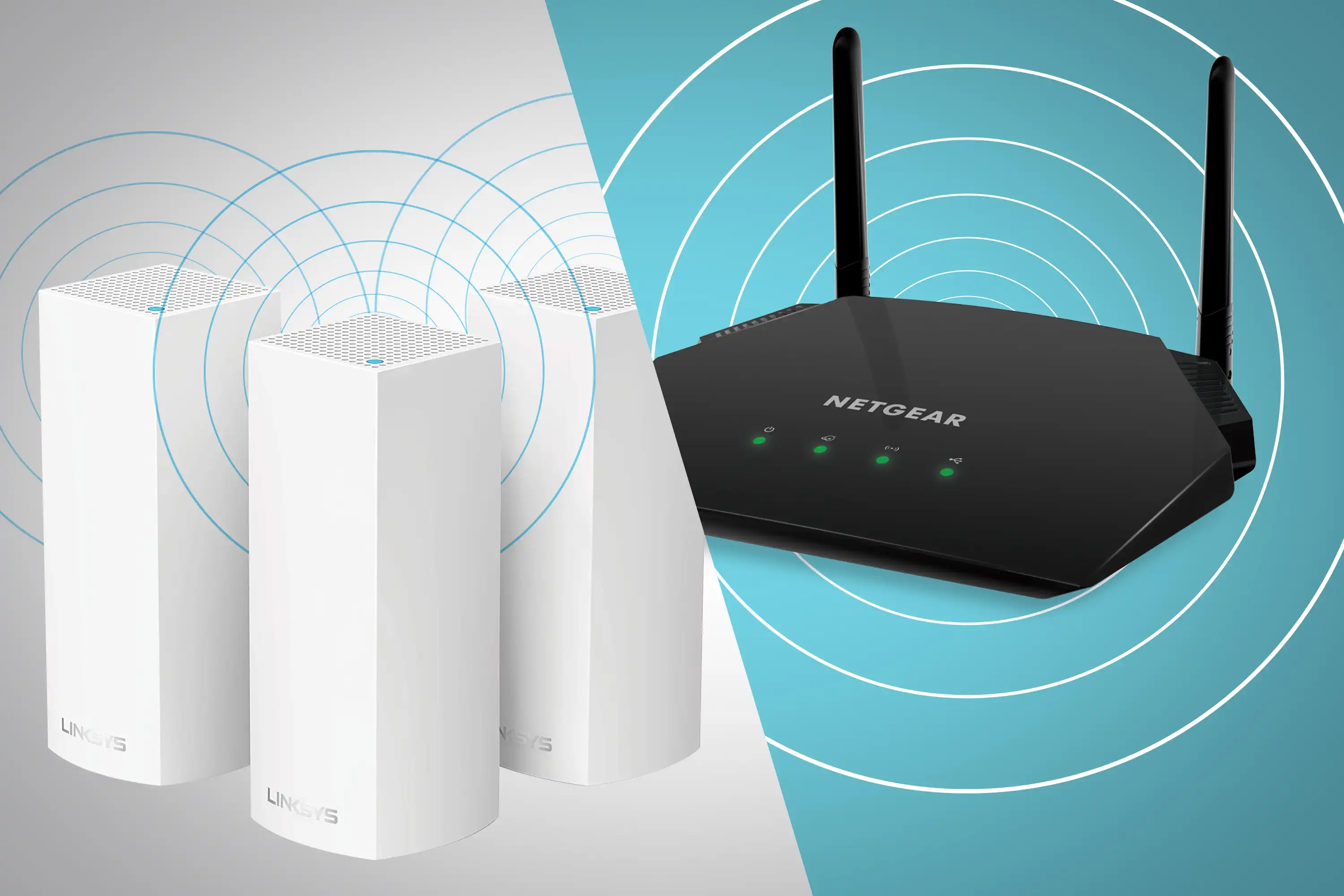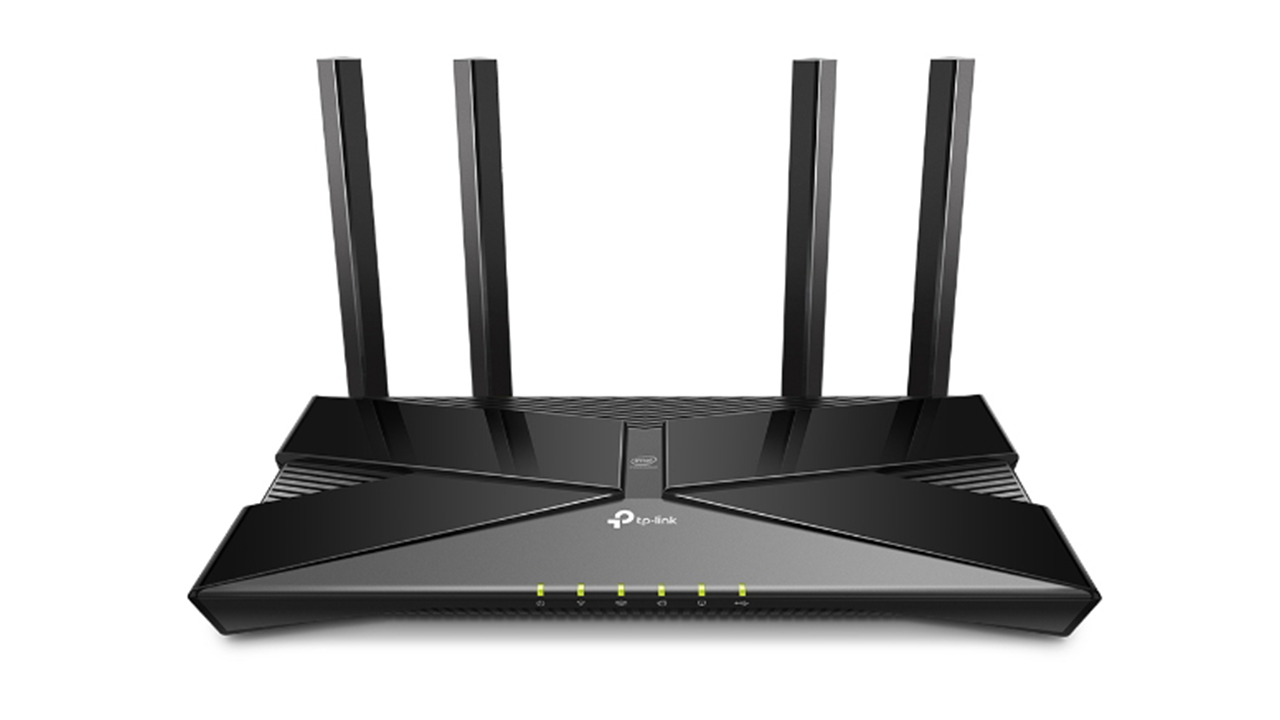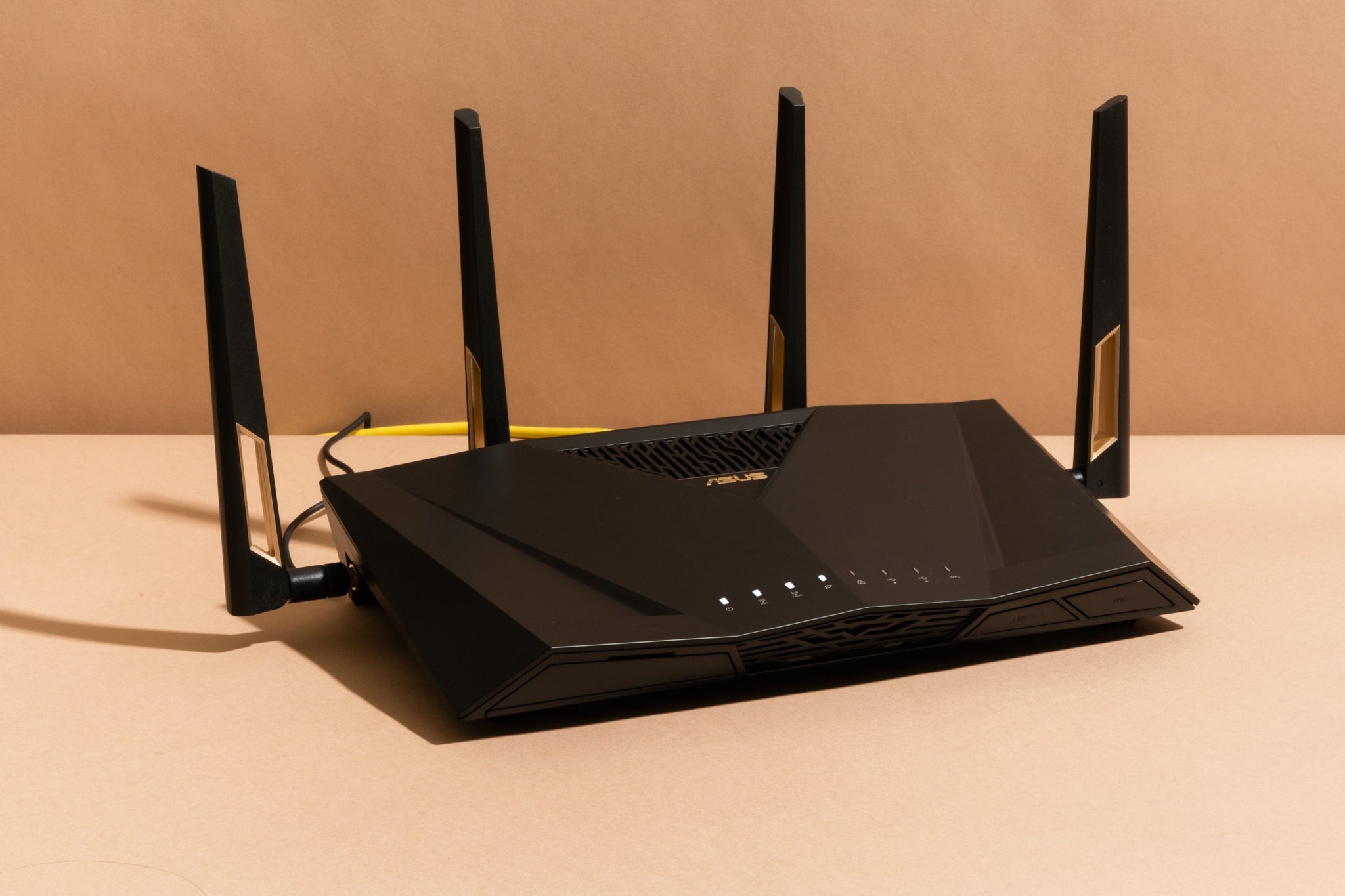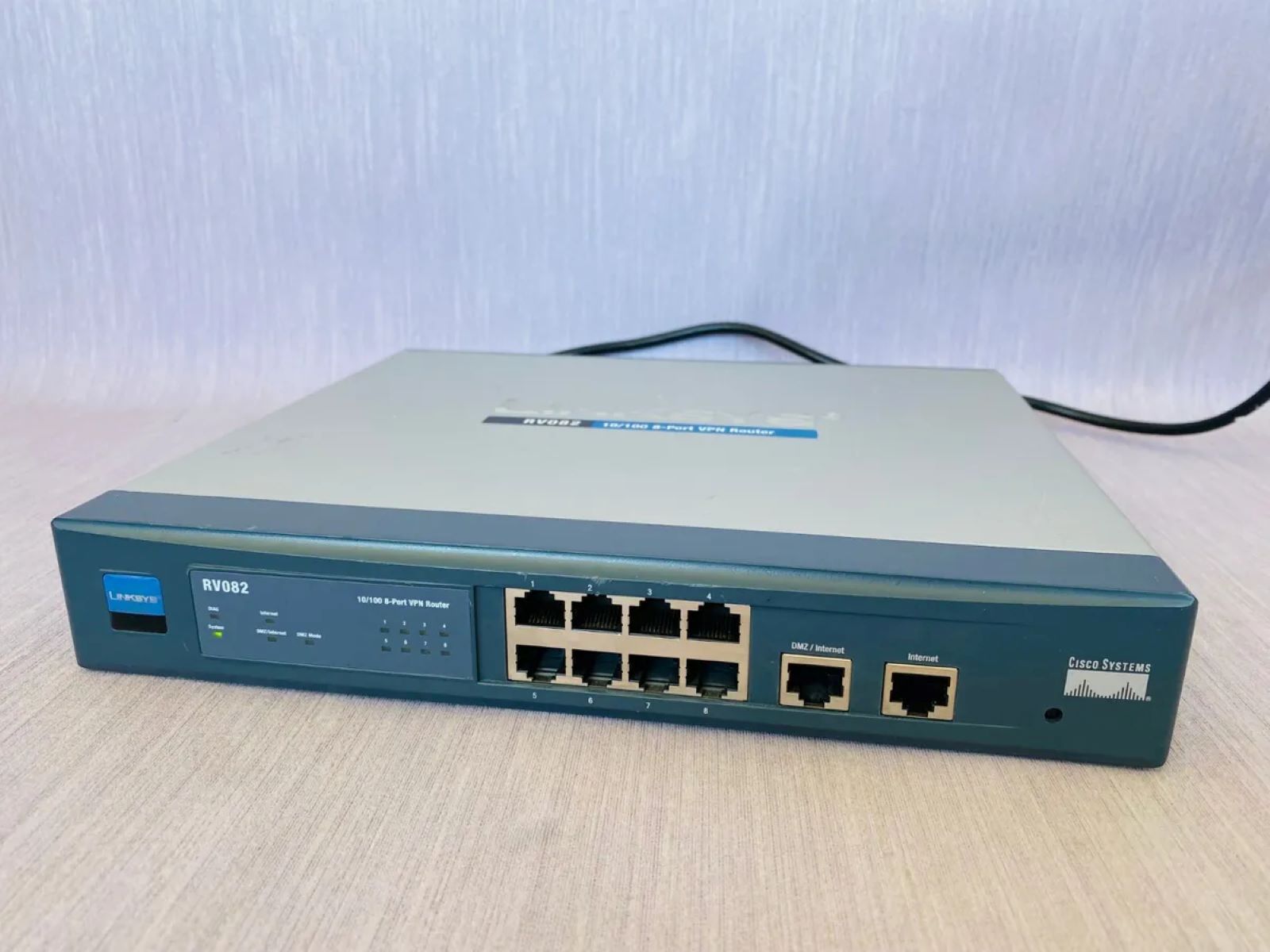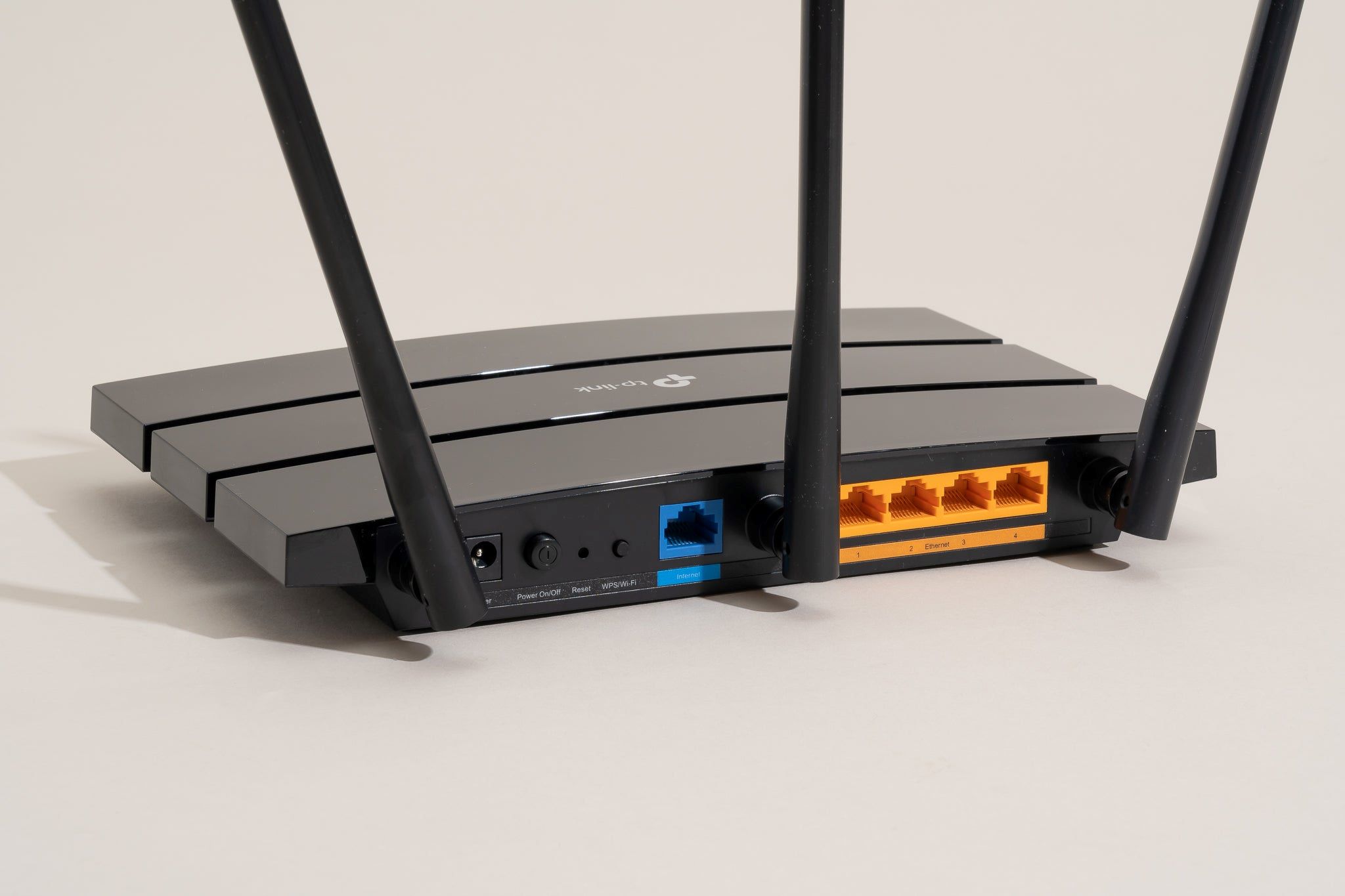Introduction
Welcome to the world of online gaming, where every second counts and lag can make or break your gaming experience. In order to ensure a smooth and uninterrupted gaming session, having a reliable internet connection is crucial. But did you know that the type of router you use can also greatly impact your gaming performance?
A gaming router is specifically designed to optimize your online gaming experience by prioritizing internet traffic, reducing lag, and providing a stable connection. With features like Quality of Service (QoS), dual-band or tri-band capabilities, MU-MIMO technology, and advanced network congestion management, gaming routers provide a significant advantage for gamers.
The purpose of this article is to delve into the world of gaming routers and explore how they work. We’ll discuss the importance of a gaming router, how they prioritize internet traffic, the different types of gaming routers available, and the features that set them apart from regular routers.
Whether you’re a casual gamer or a professional eSports player, having a reliable and optimized internet connection is essential. A gaming router can make a world of difference, delivering a seamless gaming experience with reduced latency, improved speed, and enhanced stability.
So, if you’re ready to dive into the world of gaming routers and discover how they can take your gaming performance to the next level, let’s get started!
What is a gaming router?
A gaming router is a specialized networking device designed to enhance the online gaming experience. While regular routers are built to handle general internet traffic, gaming routers are optimized to prioritize and optimize gaming data. They provide advanced features and technologies that reduce latency, minimize lag, and ensure a stable and reliable connection for gamers.
Gaming routers are equipped with powerful processors and memory, allowing them to handle large amounts of data and traffic without slowing down. They also come with built-in Quality of Service (QoS) mechanisms that allow for the prioritization of gaming data over other internet traffic in real-time.
One of the key differences between a gaming router and a regular router is the focus on minimizing latency. Latency, also known as ping, refers to the time it takes for data to travel from your device to the game server and back. In online gaming, low latency is crucial as it minimizes delays and improves gameplay responsiveness.
Gaming routers employ various technologies to reduce latency, such as Packet Prioritization, where gaming data is given higher priority over other types of data. This ensures that your gaming packets are sent and received quickly, resulting in smoother gameplay.
Another important feature of gaming routers is their ability to provide a dedicated and stable wireless connection. They are usually equipped with dual-band or tri-band capabilities, allowing them to operate on multiple wireless frequencies simultaneously. This helps to reduce interference and congestion, providing a more stable and reliable wireless connection for gaming.
Overall, gaming routers are designed to deliver the best possible gaming experience by optimizing internet traffic, reducing latency, and providing a stable connection. They are a valuable investment for gamers who demand high performance and reliability from their network connection.
Importance of a gaming router
In the world of online gaming, where split-second decisions can determine victory or defeat, having a gaming router is essential. A gaming router offers several benefits that can greatly enhance your gaming experience. Let’s take a closer look at the importance of having a dedicated router for gaming.
First and foremost, a gaming router helps to reduce latency, also known as ping. Low latency is crucial in online gaming as it minimizes the delay between your actions and their corresponding outcomes in the game. Gaming routers use advanced QoS mechanisms to prioritize gaming data over other internet traffic, ensuring that your commands reach the game server with minimum delay. This results in a more responsive and lag-free gaming experience, allowing you to perform at your best.
Another key advantage of a gaming router is its ability to provide a stable and reliable connection. Gaming routers are designed to minimize signal interference and provide consistent bandwidth, preventing sudden drops or fluctuations in network performance. This is particularly important for online multiplayer games, where a stable connection is vital to avoid disconnections or lag spikes that can ruin the gameplay experience.
Gaming routers also offer advanced network congestion management features. They can automatically detect and prioritize gaming traffic, allocating the necessary bandwidth for a smooth gaming experience. This ensures that even in a crowded network environment, your gaming data continues to receive optimal treatment, resulting in reduced lag and improved overall performance.
Furthermore, a gaming router often comes equipped with multiple antennas and powerful transmitters, allowing for wider coverage and stronger signals. This ensures that your gaming devices receive a strong and stable wireless connection, even when you’re not in close proximity to the router.
Additionally, gaming routers often offer additional features to enhance security and protect your gaming network. They may include built-in firewalls, VPN support, and parental controls, giving you peace of mind and safeguarding your gaming experience from potential threats.
Overall, a gaming router is a valuable investment for any serious gamer. It provides the necessary tools and features to optimize your gaming experience, minimize lag, reduce latency, and ensure a stable and reliable connection. With a gaming router, you can fully immerse yourself in the world of online gaming and compete at your best without any technical limitations holding you back.
How gaming routers prioritize internet traffic
One of the main advantages of a gaming router is its ability to prioritize internet traffic, giving gaming data preferential treatment over other types of data. This ensures that your gaming experience remains smooth and uninterrupted, even when other devices on your network are consuming bandwidth. Let’s explore how gaming routers prioritize internet traffic and ensure optimal gaming performance.
Gaming routers make use of a feature called Quality of Service (QoS) to prioritize gaming data. QoS is a mechanism that allows the router to allocate bandwidth and prioritize certain types of data over others. By assigning priority levels to different types of traffic, such as gaming data, video streaming, web browsing, or file downloads, the router ensures that critical traffic, like gaming packets, are processed with minimal delay.
Most gaming routers come with a default QoS setting that automatically detects gaming traffic and gives it the highest priority. This means that whenever you’re playing a game, the router will allocate a significant portion of the available bandwidth to ensure smooth gameplay and reduced latency. Other types of data, such as downloads or streaming, will receive lower priority, preventing them from overwhelming your gaming connection.
Some advanced gaming routers also allow for manual customization of QoS settings. This enables you to fine-tune the prioritization based on your specific needs and preferences. For example, you can allocate maximum bandwidth to gaming traffic while limiting the bandwidth for other less critical activities.
Another feature commonly found in gaming routers is DSCP (Differentiated Services Code Point) marking. DSCP marking is a method used to classify and prioritize packets based on their specific needs. When gaming data is marked with a specific DSCP value, the router recognizes it as high-priority traffic and ensures it gets processed promptly.
Gaming routers also employ packet shaping techniques to manage network traffic effectively. This involves regulating the flow of data packets according to predefined rules and prioritizing the delivery of gaming packets. By intelligently managing packet flow, gaming routers can reduce latency, prevent congestion, and optimize bandwidth usage.
Furthermore, gaming routers often have built-in traffic monitoring tools that allow you to see which devices or applications are consuming the most bandwidth. This insight can help you identify any bandwidth-hogging devices or activities and make necessary adjustments to ensure optimal gaming performance.
Overall, gaming routers use QoS mechanisms, DSCP marking, and packet shaping techniques to prioritize gaming data over other internet traffic. By giving gaming packets higher priority, gaming routers ensure that your gameplay remains smooth and lag-free, even when multiple devices are connected and active on your network.
Quality of Service (QoS) in gaming routers
Quality of Service (QoS) is a crucial feature found in gaming routers that allows for the prioritization of specific types of data traffic over others. It ensures that gaming data gets the necessary bandwidth and minimal delay, resulting in a smoother and more responsive gaming experience. Let’s take a closer look at how QoS works in gaming routers.
QoS in gaming routers enables the differentiation and prioritization of various types of network traffic, such as gaming data, streaming video, VoIP calls, or file downloads. By assigning priority levels to these different types of traffic, the router ensures that critical data, like gaming packets, are given higher priority and processed with minimal latency.
There are several methods by which QoS classifies and prioritizes data traffic. One common approach is through port-based prioritization, where specific ports or ranges of ports are reserved for gaming traffic. This ensures that gaming data passing through those ports receives the highest priority, resulting in reduced lag and smoother gameplay.
Another approach to QoS in gaming routers is application-based prioritization. In this method, the router identifies gaming applications or protocols and assigns them higher priority. This allows the router to automatically detect gaming traffic and prioritize it, regardless of the specific ports used.
DSCP (Differentiated Services Code Point) marking is also used in QoS to classify and prioritize packets. Through DSCP marking, gaming packets are assigned a specific value that identifies them as high-priority traffic. The router then ensures that these packets are processed promptly, minimizing latency and optimizing the gaming experience.
Many gaming routers offer pre-configured QoS settings specifically designed for popular gaming platforms or games. These settings are optimized to prioritize gaming traffic for a seamless gaming experience without having to manually fine-tune the QoS parameters.
Advanced gaming routers often provide options for manual QoS customization, allowing users to set specific priorities for different types of traffic. This allows for personalized optimization based on individual preferences and network requirements. For example, users can allocate maximum bandwidth to gaming traffic while limiting the bandwidth for other less critical activities.
Additionally, QoS in gaming routers can include bandwidth management capabilities. This feature allows users to specify the maximum amount of bandwidth allotted for different types of traffic. With bandwidth management, users can ensure that gaming data always gets the necessary resources, even when other devices on the network are consuming bandwidth.
Overall, Quality of Service (QoS) is a vital feature in gaming routers that ensures gaming traffic receives the priority and resources it needs for optimal performance. Whether through port-based prioritization, application-based identification, DSCP marking, or manual customization, QoS in gaming routers helps reduce latency, minimize lag, and deliver a smoother gaming experience.
Dual-band vs. Tri-band gaming routers
When it comes to gaming routers, one important consideration is the number of wireless bands they support. Dual-band and tri-band routers are the two main options available, each with their own advantages and considerations. Let’s compare and contrast dual-band and tri-band gaming routers to help you make an informed decision.
1. Dual-band routers: Dual-band routers operate on two different frequencies: the 2.4 GHz band and the 5 GHz band. The 2.4 GHz band offers a wider coverage area but is more susceptible to interference from other devices like microwaves or cordless phones. On the other hand, the 5 GHz band offers faster speeds and is less crowded, resulting in reduced latency and improved gaming performance.
Dual-band routers are suitable for most gamers, especially those living in areas with minimal wireless interference. They offer a good balance between coverage and performance, providing a stable and reliable connection for lag-free gaming. They are also generally more affordable compared to tri-band routers.
2. Tri-band routers: Tri-band routers, as the name suggests, operate on three different frequencies: one 2.4 GHz band and two 5 GHz bands. The additional 5 GHz band provides an extra channel for transmitting data, reducing congestion and improving overall performance in environments with many connected devices.
Tri-band routers are ideal for gamers who require the utmost performance and have multiple devices competing for bandwidth. They excel in busy households or apartments with numerous devices connected simultaneously. The additional 5 GHz band ensures dedicated bandwidth for gaming, resulting in smoother gameplay, reduced latency, and enhanced overall network performance.
It’s important to note that not all gaming devices can take advantage of the additional 5 GHz band in tri-band routers. Before investing in a tri-band router, ensure that your gaming devices support the third 5 GHz band to fully reap the benefits.
In summary, if you’re a casual gamer or live in an area with minimal interference, a dual-band router should suffice for your gaming needs. However, if you have multiple devices on your network or live in a crowded wireless environment, a tri-band router will provide the extra bandwidth and performance required for a lag-free gaming experience.
Ultimately, the choice between a dual-band and tri-band gaming router depends on your specific gaming requirements, the number of devices on your network, and the level of wireless interference in your area. Consider your gaming setup and network environment to determine which option will best suit your needs and provide the optimal gaming performance you desire.
MU-MIMO technology in gaming routers
Multi-User Multiple-Input Multiple-Output (MU-MIMO) is a technology found in gaming routers that greatly improves wireless performance and network efficiency. It allows the router to communicate with multiple devices simultaneously, reducing latency, increasing throughput, and enhancing the overall gaming experience. Let’s delve into the benefits and workings of MU-MIMO technology in gaming routers.
1. Simultaneous communication: Traditional routers utilize Single-User MIMO (SU-MIMO) technology, where they communicate with one device at a time. This can result in increased latency when multiple devices are connected and active on the network. In contrast, MU-MIMO technology enables the router to communicate with multiple devices simultaneously, drastically reducing lag and improving network performance.
2. Increased throughput: With MU-MIMO, the router’s wireless signal is divided into multiple streams, allowing for more data to be transmitted concurrently. Instead of waiting for their turn, devices can send and receive data at the same time, increasing overall network throughput. This is especially beneficial for gaming, where a high-speed and stable connection is crucial for smooth gameplay.
3. Efficient resource allocation: MU-MIMO routers intelligently allocate resources based on the number of devices and the data requirements of each device. They dynamically adjust the transmission power and beamforming to ensure optimal signal strength and stability. This efficient resource allocation improves overall network performance, minimizing congestion and reducing latency.
4. Enhanced gaming experience: MU-MIMO technology in gaming routers significantly improves the gaming experience by reducing lag, providing a stable connection, and ensuring fast and reliable data transmission. This is especially important for online multiplayer games, where a split-second delay can affect gameplay and competitive performance.
It’s important to note that for a device to fully benefit from MU-MIMO technology, it must also support MU-MIMO. This means that your gaming devices, such as laptops, smartphones, or gaming consoles, need to have compatible MU-MIMO capabilities. This ensures that they can take advantage of the simultaneous communication and increased throughput provided by the MU-MIMO-enabled router.
Overall, MU-MIMO technology is a game-changer for gaming routers, revolutionizing the way they handle multiple wireless devices. By allowing for simultaneous communication and optimizing resource allocation, MU-MIMO significantly improves network performance, reduces lag, and enhances the overall gaming experience. When paired with MU-MIMO-compatible gaming devices, gamers can enjoy a seamless and lag-free connection, giving them a competitive edge in online gaming.
Network congestion management in gaming routers
Network congestion can be a significant challenge for online gaming, resulting in increased latency, packet loss, and overall degraded gaming performance. To address this issue, gaming routers incorporate advanced network congestion management features that help optimize bandwidth usage and ensure a smooth gaming experience. Let’s explore how gaming routers manage network congestion and minimize its impact on gameplay.
1. Bandwidth prioritization: Gaming routers often feature Quality of Service (QoS) mechanisms that allow for the prioritization of gaming traffic. By assigning higher priority to gaming packets over other types of data, the router ensures that gaming data is given preferential treatment, ensuring a stable and responsive connection for online gaming.
2. Resource allocation: Gaming routers intelligently allocate network resources based on the demands of various devices and applications. When network congestion occurs, the router dynamically adjusts resource allocation to ensure that critical gaming data receives optimal bandwidth and minimal latency. This helps prevent lag spikes and ensures a consistent gaming experience even in busy network environments.
3. Packet inspection and shaping: Gaming routers employ packet inspection techniques to identify and prioritize gaming traffic. By examining the characteristics of network packets, such as source/destination IP addresses or protocol types, the router can determine whether the traffic is gaming-related and give it higher priority. Additionally, packet shaping techniques can be used to regulate the flow of data packets, managing congestion and mitigating the impact of heavy network traffic.
4. Buffer management: Gaming routers utilize buffer management algorithms to handle data congestion. When the router receives more data than it can immediately process, packets are stored in buffers. The router’s buffer management system ensures that gaming packets are given precedence and processed without delay, minimizing the potential adverse effects of network congestion.
5. Dynamic bandwidth allocation: Some gaming routers employ dynamic bandwidth allocation techniques to respond to changing network conditions. When network congestion is detected, the router can automatically adjust the allocation of available bandwidth, ensuring that gaming traffic receives the necessary resources to maintain a stable and responsive connection. This dynamic allocation helps prevent performance degradation during periods of high network demand.
6. Traffic prioritization and shaping: In addition to prioritizing gaming traffic, gaming routers can also shape the behavior of other network traffic. By classifying and prioritizing different types of data, such as streaming video or file downloads, gaming routers ensure that these activities do not overwhelm the available bandwidth, maintaining a consistent and reliable gaming experience.
In summary, network congestion management in gaming routers is essential for maintaining optimal gaming performance. Through the use of techniques like bandwidth prioritization, resource allocation, packet inspection, buffer management, dynamic bandwidth allocation, and traffic shaping, gaming routers effectively manage network congestion and deliver a smooth and responsive gaming experience even in demanding network environments.
Port forwarding and NAT settings in gaming routers
For optimal online gaming experience, gaming routers often provide features like port forwarding and Network Address Translation (NAT) settings. These features allow gamers to establish secure connections with game servers and ensure smooth gameplay. Let’s delve into how port forwarding and NAT settings work in gaming routers.
1. Port forwarding: Port forwarding is a technique used to redirect incoming network traffic from specific ports to a particular device on the local network. In online gaming, port forwarding is commonly used to establish a direct connection between the gamer’s device and the game server. By opening specific ports required by the game, the router ensures that the gaming data flows seamlessly between the gamer and the server, reducing latency and potential connection issues.
To set up port forwarding, gamers need to log into their router’s administration interface and access the port forwarding settings. From there, they can specify the external and internal port numbers and the IP address of the gaming device on the local network. Once configured, the router will forward incoming data packets from the specified ports to the designated device, optimizing the gaming experience.
2. NAT settings: Network Address Translation (NAT) is a process used by routers to translate private IP addresses used on the local network into a single public IP address seen by the external network, such as the internet. NAT enables multiple devices to share a single public IP address, enhancing network security and conserving IP addresses.
In gaming, NAT settings can impact the connectivity and performance of online gameplay. There are three main types of NAT settings: strict, moderate, and open. Strict NAT can cause issues with connecting to other players, while moderate NAT may have some limitations but allows for better connectivity. Open NAT provides the best connectivity, allowing for unrestricted access to other players and game servers.
Gaming routers often provide options to manage NAT settings and ensure an open NAT type for the best gaming experience. These options may include enabling Universal Plug and Play (UPnP), which automatically manages port forwarding and NAT settings, or manually configuring the router to open specific ports for the gamer’s device.
By properly configuring port forwarding and NAT settings, gamers can establish direct connections with game servers, reduce latency, and avoid connection issues. This allows for smoother gameplay, improved network performance, and enhanced multiplayer experiences.
It’s worth noting that some gaming routers offer additional features like DMZ (Demilitarized Zone) or gaming modes that provide further optimization for online gaming. These features can simplify the setup process and maximize the gaming performance by automatically applying port forwarding rules and prioritizing gaming traffic.
In summary, port forwarding and NAT settings play a crucial role in ensuring a seamless and secure online gaming experience. By properly configuring these settings on gaming routers, gamers can establish direct connections with game servers, reduce latency, and avoid connectivity issues, resulting in smooth gameplay and enhanced multiplayer experiences.
Security features in gaming routers
While gaming routers are primarily designed to enhance performance and provide a stable connection for online gaming, they also prioritize security to protect gamers from potential threats. Gaming routers come equipped with various security features that safeguard the network, devices, and personal information. Let’s explore some of the key security features found in gaming routers.
1. Firewall: Gaming routers typically include built-in firewalls that act as the first line of defense against malicious attacks. Firewalls monitor incoming and outgoing network traffic, blocking unauthorized access to the network and preventing potential threats from compromising the gaming experience. These firewalls can be configured to allow or block specific types of traffic based on predefined rules.
2. WPA/WPA2 encryption: Gaming routers support the latest wireless security protocols such as WPA (Wi-Fi Protected Access) and WPA2, ensuring that the wireless network is secured and private. These encryption protocols encrypt the data transmitted between the gaming device and the router, protecting it from eavesdropping and unauthorized access.
3. Guest network: Many gaming routers feature a guest network option, which allows visitors or friends to connect to a separate network dedicated for guests. This keeps the main network secure and private, preventing potential threats or unauthorized access to the gamer’s devices or personal data.
4. VPN support: Virtual Private Networks (VPNs) create an encrypted connection between the gamer’s device and a remote server, ensuring privacy and security. Gaming routers with VPN support allow gamers to easily set up and connect to a VPN, adding an extra layer of security when gaming, especially in public Wi-Fi or less secure networks.
5. Parental controls: Gaming routers often include parental control features that allow parents to filter or restrict access to certain websites, limit internet usage during specific hours, or block inappropriate content. These controls ensure a safe and controlled gaming environment for younger gamers.
6. Device quarantine: Advanced gaming routers may have the ability to quarantine devices that exhibit suspicious behavior or are compromised by malware. The quarantine feature isolates the infected device from the network, preventing the spread of malware or potential attacks to other devices on the network.
7. Regular firmware updates: Keeping the router’s firmware up to date is crucial for security. Gaming router manufacturers frequently release firmware updates that address security vulnerabilities and improve overall functionality. Regularly updating the firmware helps ensure the router remains secure against emerging threats.
By incorporating these security features, gaming routers provide gamers with a protected and secure network environment. These features offer peace of mind, allowing gamers to focus on their gameplay without worrying about potential security risks or unauthorized access to their devices or personal information.
It’s important for gamers to proactively manage their network security by regularly updating the router’s firmware, establishing strong and unique passwords, and staying aware of potential security risks in the gaming community.
In summary, security features in gaming routers play a crucial role in protecting gamers and their networks from potential threats. Through features such as firewalls, encryption protocols, guest networks, VPN support, parental controls, device quarantining, and regular firmware updates, gaming routers provide a secure gaming experience and safeguard personal information.
Mesh networking and gaming routers
Mesh networking is a revolutionary technology that is rapidly gaining popularity, and it also offers significant benefits for gamers. Traditional routers rely on a single device to cover the entire area, but mesh networking takes a different approach by using multiple interconnected devices to create a seamless network. Let’s explore how mesh networking can enhance the gaming experience with gaming routers.
1. Expanded coverage: Mesh networking allows for the creation of a broader wireless coverage area compared to a single traditional router. By using multiple devices, known as nodes, placed strategically throughout the home, mesh networks provide extended coverage and eliminate dead zones. This ensures that gamers can enjoy a strong and stable wireless connection throughout their entire gaming area.
2. Seamless roaming: With mesh networking, gamers can seamlessly move around their home without experiencing any significant drop in connection quality. As gamers move from one area to another, the mesh network intelligently hands off the connection from one node to another, ensuring that the connection remains uninterrupted. This is particularly beneficial for gamers who enjoy mobile or VR gaming experiences.
3. Automatic optimization: Mesh networking systems, including gaming routers, often feature self-optimizing capabilities. They automatically analyze the wireless environment, monitor network congestion, and adjust the channel selection and signal strength of each node to provide the best possible gaming experience. This dynamic optimization minimizes interference and maximizes network performance for lag-free gaming.
4. Load balancing: In mesh networks, the load is distributed across multiple nodes, preventing a single device from becoming overloaded. This load balancing feature ensures that gaming traffic is evenly distributed, maintaining a stable and responsive connection for all gamers on the network. It helps prevent bottlenecks and provides a dependable gaming experience even during heavy network usage.
5. Easy setup and expansion: Setting up a mesh network is typically straightforward, with many systems offering user-friendly mobile apps or web interfaces for configuration. Adding additional nodes to expand the network is a simple process, ensuring scalability for larger homes or areas that require additional coverage. This flexibility allows gamers to easily adapt and expand their network as their gaming needs evolve.
It’s worth noting that there might be a slight increase in latency in certain mesh networking setups compared to a single traditional router. This is due to the communication between nodes in the network. However, advancements in technology have significantly reduced this latency, and most gamers will not experience any noticeable impact on their gameplay.
In summary, mesh networking brings significant advantages to gaming routers by providing expanded coverage, seamless roaming, automatic optimization, load balancing, and easy setup and expansion. With a properly configured mesh network, gamers can enjoy a strong, stable, and reliable connection throughout their entire gaming area, enabling an immersive and uninterrupted gaming experience.
Choosing the right gaming router for your needs
When it comes to selecting the right gaming router, several factors need to be considered to ensure the best gaming experience possible. Here are some key considerations to keep in mind when choosing a gaming router:
1. Internet connection speed: Assess your current internet connection speed to determine the capabilities you require from your gaming router. If you have a high-speed internet connection, look for a router that can handle the bandwidth and provide optimal performance for your gaming activities. Consider routers with support for the latest Wi-Fi standards, such as Wi-Fi 6, to take full advantage of faster internet speeds.
2. Wireless range: Evaluate the size of your gaming area and the distance between your gaming devices and the router. Choose a gaming router with sufficient wireless range to cover your entire gaming space without any dead zones or signal degradation. If necessary, consider options like mesh networking to ensure seamless coverage throughout your gaming environment.
3. Ports and connectivity: Consider the number and type of ports you require for your gaming setup. Look for routers with multiple Ethernet ports if you plan to connect gaming consoles or desktop computers directly with a wired connection. Additionally, check for USB ports if you need to connect external storage devices or other peripherals for gaming purposes.
4. Quality of Service (QoS) features: Gaming routers with advanced QoS features allow you to prioritize gaming traffic over other types of data, reducing latency and ensuring a smooth gaming experience. Look for routers that offer customizable QoS settings or gaming-specific presets to tailor the network prioritization to your specific gaming needs.
5. Security features: Ensure that the gaming router you choose provides ample security features to protect your network and devices from potential threats. Look for routers with built-in firewalls, robust encryption protocols, guest network options, VPN support, and regular firmware updates to keep your gaming environment secure.
6. Brand reputation and reliability: Consider the reputation and reliability of the gaming router brand. Look for well-established brands known for producing high-quality and durable routers. Research customer reviews and ratings to gain insights into real-world experiences with the router you are considering.
7. Budget: Finally, determine your budget for the gaming router. While it is essential to invest in a high-quality router, consider your budgetary constraints and find the best balance between price and performance. There are gaming routers available at various price points, so choose one that meets your requirements without breaking the bank.
By considering these factors, you can choose a gaming router that fits your specific needs, delivers optimal performance, and enhances your gaming experience. Remember, every gamer’s requirements may vary, so spending time researching and understanding your specific needs will help you make an informed decision.
Conclusion
Gaming routers play a crucial role in optimizing the online gaming experience. They offer a range of features and technologies that prioritize gaming traffic, reduce latency, and provide a stable and reliable connection. From their ability to prioritize internet traffic and manage network congestion to their security features and compatibility with advanced technologies like mesh networking, gaming routers are designed to enhance the gaming experience.
When selecting a gaming router, it’s important to consider factors such as internet connection speed, wireless range, QoS features, security measures, and brand reliability. By choosing the right gaming router for your needs, you can ensure a seamless gaming experience with reduced lag, improved performance, and enhanced network stability.
Whether you’re a casual gamer looking for a reliable connection or a professional eSports player in need of the fastest speeds and lowest latency, investing in a gaming router is a valuable choice. These routers provide the necessary tools to optimize your gaming experience, eliminate frustrating lag, and keep you one step ahead of your opponents.
As technology continues to advance, gaming routers are evolving to meet the ever-growing demands of gamers. With features like MU-MIMO technology, advanced QoS mechanisms, and the ability to mesh networks, gaming routers are at the forefront of innovation in the gaming industry.
Remember, choosing the right gaming router is a personal decision that depends on your specific gaming needs and network environment. Research various models, read customer reviews, and consider your budget to find the gaming router that will best meet your requirements and provide the ultimate gaming experience.
So, whether you’re battling in the world of competitive multiplayer or exploring vast virtual worlds, a gaming router is your secret weapon for unlocking the full potential of online gaming. Upgrade to a gaming router, optimize your network, and get ready to dominate the gaming arena like never before!









